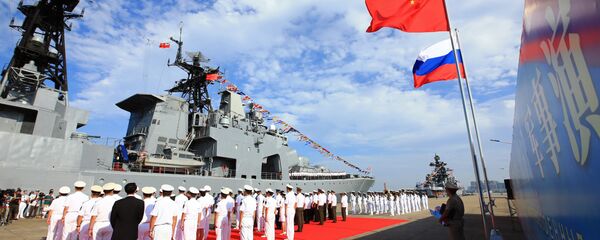Many industries are dominated by two players — Microsoft and Apple, Coca-Cola and Pepsi — but the stranglehold Boeing and Airbus have on the aviation industry is hard to overestimate. The two companies account for a majority of the market share for single-aisle passenger planes. Their competitors, if the term even applies here, such as Bombardier and Embraer are very far behind.
Yet the new partnership is not shy about its intentions. Commercial Aircraft Corp of China (COMAC) and Russia's United Aircraft Corp want their new, as yet unnamed aircraft, to compete with the most successful passenger planes in existence.
Aware of its late entry into the race, Craic is looking to cut costs to compete. COMAC's assistant president, Guo Bozhi, has said that the new plane will have 10 percent lower operating costs along with an "advanced aerodynamic design" and "engines with low fuel burn." This might be encouraging if Boeing and Airbus did not pour billions into R&D of their own. A glance at Airbus' technology plans for the future turns up faster braking, low-noise, free glide approaches, using big data to streamline maintenance.
Furthermore, the Craic plane is not scheduled to be ready for a decade. By then, aircraft advances will have moved on in leaps and bounds. The alliance will be developing an airliner while playing a long-term catch-up game.
But there is far more than engineering at stake here. It is understandable that observers have latched on to the above narrative. A new Chinese rival to Boeing and Airbus is a sexy story to write but the reality is different. As the US and Europe have their airplane giants, it makes complete sense for China and Russia to have their own.
However, the building of a global supply chain, of reliable, long-term engineering and testing, of figuring out what added value to bring, are all tasks Craic needs to address immediately.
It has some advantages on its side. Some titans of the aviation supply chain collaborated on the C919, including General Electric, Honeywell, and Safran. Furthermore, even with a long-term approach, a new player with the money that Craic will be throwing around will stir the aviation industry.
The Chinese aviation market will become the largest in the world in terms of passengers by 2024, according to the International Air Transport Association. As the obvious breeding ground for any planes Craic cranks out, suppliers will want to bet in on the ground floor.
While China's C919 has already taken to the skies, success will not come easily. Dominance in the aircraft industry comes with a backdrop of industry benchmarks, from active sales to a track record of safety. Building the plane is only step one out of 100.
This should be a long-term objective. The natural starting point is to convert the Russian and Chinese domestic markets to the C919 and its successors from within Craic.
There has been some international interest. In 2011, Ryanair signed a memorandum of understanding "to participate in discussions on the development" of the C919, with its CEO Michael O'Leary stating that "we are pleased that there is now a real alternative to Boeing and Airbus, and we are seriously interested in the development of a 200-seat variant of the C919 aircraft."
This interest was confirmed after the aircraft's maiden flight, contingent on a 199-seat model of the plane being sold at a competitive price.
More competition is always good. But expectations need to be managed. It is all but impossible for Craic to disrupt the Boeing-Airbus twosome in the short or medium-term. If expectations are set in China and Russia for it to do that, good money after bad will be wasted and any plane the alliance produces will stall out of the gates.
However, should Craic be given the time and finances to grow, it will have the opportunity to be what would truly benefit China and Russia: a long-term, reliable pillar of the aviation industry.
This article, written by Chris Dalby, was originally published in the Global Times.






